Table of Contents
In the realm of adrenaline and artistry, The history and culture of snowboarding weave a captivating narrative. From humble beginnings in the 1960s to its current status as a global phenomenon, snowboarding has carved its unique path, leaving an indelible mark on winter sports and popular culture. Join Kizworld on a journey through time, as we explore the stories of pioneers, the evolution of equipment, the rise of snowboarding culture, and the impact it has had on fashion, music, and art. Discover the essence of snowboarding, a sport that embodies freedom, creativity, and the pursuit of adventure.
Gravity's Dance: The History and Culture of Snowboarding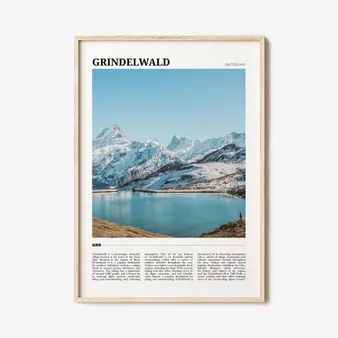
I. The Evolution of Snowboarding: From Humble Beginnings to Mainstream Popularity
The Evolution of Snowboarding: From Humble Beginnings to Mainstream Popularity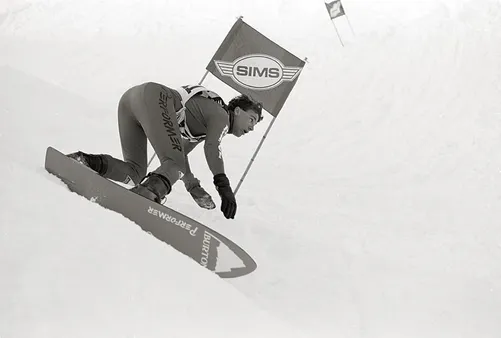
The Early Days of Snowboarding: A Journey Through Innovation
The history of snowboarding traces back to the early 1900s, with the first known snowboard resembling today's design invented by Sherman Poppen in 1965. This rudimentary board, crafted from wood and rope, laid the foundation for the sport's rise to prominence. In the 1970s, Jake Burton Carpenter, another snowboarding pioneer, revolutionized the equipment with his innovative bindings, which allowed for greater control and maneuverability. As news of this groundbreaking invention spread, snowboarding began to gain traction, attracting a growing number of enthusiasts.
- Discover more about the different types of snowboards available and how to select the one that suits your needs.
- Learn about the fitness and health benefits of snowboarding and how it can contribute to an active lifestyle.
A Cultural Movement Takes Shape: The Rise of Snowboarding Culture
As snowboarding gained momentum, it quickly transcended its status as a mere sport and evolved into a vibrant cultural movement. The 1980s witnessed the emergence of snowboarding's unique style and fashion, characterized by baggy clothing, bright colors, and a rebellious attitude. Snowboarders embraced a laid-back and adventurous lifestyle, fueled by their passion for conquering snowy mountains. This cultural phenomenon captured the imagination of countless individuals, further propelling the sport's popularity.
Year | Significant Event |
|---|---|
1965 | Sherman Poppen invents the first modern snowboard. |
1977 | Jake Burton Carpenter introduces his innovative snowboard bindings. |
1983 | The first snowboarding competition is held in Suicide Six, Vermont. |
1998 | Snowboarding makes its debut as an Olympic sport at the Nagano Winter Games. |
From Underground to Mainstream: Snowboarding's Global Impact
By the 1990s, snowboarding had established itself as a mainstream sport, captivating audiences worldwide. The Winter X Games, first held in 1997, provided a platform for snowboarders to showcase their skills and compete for medals, further elevating the sport's profile. Additionally, the advent of snowboarding movies and video games introduced the sport to a broader audience, inspiring a new generation of riders. Today, snowboarding is enjoyed by millions worldwide, with resorts and parks dedicated to the sport's enthusiasts.
II. Cultural Impact of Snowboarding: A Lifestyle Beyond the Slopes
Cultural Impact of Snowboarding: A Lifestyle Beyond the Slopes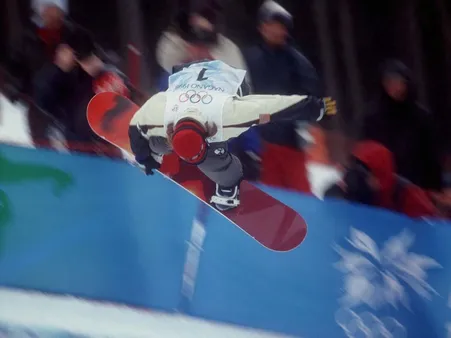
Beyond its exhilarating thrills and gravity-defying maneuvers, snowboarding has evolved into a vibrant cultural phenomenon, shaping lifestyles and defining identities. This section delves into the cultural impact of snowboarding, exploring its influence on fashion, music, art, and the creation of a unique community bound by a shared passion for the sport.
The Snowboarding Fashion Revolution
Snowboarding has sparked a fashion revolution, transforming the way people dress both on and off the slopes. From baggy pants and oversized jackets to colorful and technical apparel, snowboarding fashion is a statement of individuality and a reflection of the sport's laid-back, adventurous spirit. Brands like Burton, Volcom, and Oakley have become synonymous with snowboarding, creating iconic designs that have transcended the sport and become mainstream fashion staples.
Related post: Discover the Best Snowboarding Clothing and Apparel for Style and Performance
- Snowboarding fashion emphasizes comfort, functionality, and personal style.
- Brands like Burton, Volcom, and Oakley are at the forefront of snowboarding fashion.
- Snowboarding apparel has influenced mainstream fashion trends, such as baggy clothing and oversized jackets.
Related post: Essential Tips for Choosing the Right Snowboard for Your Skill Level and Riding Style
Moreover, snowboarding has fostered a thriving art scene, with artists finding inspiration in the sport's dynamic movements and breathtaking landscapes. From paintings and sculptures to photography and films, snowboarding has become a muse for creative expression, capturing the essence of the sport's culture and lifestyle.
The Sound of Snowboarding
Music is an integral part of the snowboarding experience, providing a soundtrack to the adrenaline and creativity that define the sport. From the energetic beats of hip-hop and rock to the chill vibes of electronic and reggae, snowboarding has its own unique musical landscape. Artists like The Beastie Boys, Snoop Dogg, and Bob Marley have all been associated with snowboarding, their music becoming anthems for riders around the world.
Related post: Experience the Best Snowboarding Music and Playlists for an Epic Ride
- Snowboarding has its own distinct musical identity, blending genres like hip-hop, rock, electronic, and reggae.
- Artists such as The Beastie Boys, Snoop Dogg, and Bob Marley have strong connections to snowboarding culture.
- Music plays a crucial role in enhancing the snowboarding experience, providing motivation, energy, and a sense of camaraderie.
Furthermore, snowboarding has fostered a sense of community and belonging among its enthusiasts. From local snowboarding clubs to online forums and social media groups, snowboarders around the world connect, share experiences, and inspire each other. This community transcends geographical and cultural boundaries, uniting individuals who share a common passion for the sport.
Related post: A Beginner's Guide to Getting Started with Snowboarding: Tips, Techniques, and Essential Gear
Snowboarding and the Environment
Snowboarding, like many outdoor activities, has a significant impact on the environment. From the carbon emissions associated with travel and the production of snowboarding gear to the potential for habitat disturbance and erosion, snowboarders must be mindful of the ecological footprint they leave behind. Sustainable practices, such as carpooling, using eco-friendly gear, and respecting the natural environment, can help minimize the sport's environmental impact.
Activity | Environmental Impact | Sustainable Practices |
Travel to Ski Resorts | Carbon emissions from transportation | Carpooling, using public transportation, or opting for eco-friendly travel options |
Production of Snowboarding Gear | Energy and resource consumption | Choosing durable and eco-friendly gear, supporting brands with sustainable practices |
Habitat Disturbance | Deforestation for resorts, trail construction | Riding in designated areas, avoiding sensitive habitats, supporting resorts with sustainable land management practices |
Erosion | Soil erosion due to snowboarding activity | Staying on designated trails, avoiding steep and unstable slopes, using proper erosion control measures |
In conclusion, snowboarding's cultural impact extends far beyond the slopes, shaping fashion, music, art, and fostering a sense of community among its enthusiasts. As the sport continues to grow in popularity, snowboarders have a responsibility to minimize their environmental impact and ensure that future generations can enjoy the same pristine landscapes they cherish today.
Related post: Essential Tips to Avoid Common Snowboarding Injuries and Stay Safe on the Slopes
III. Snowboarding Legends and Pioneers: Shaping the Sport's Identity
Snowboarding Legends and Pioneers: Shaping the Sport's Identity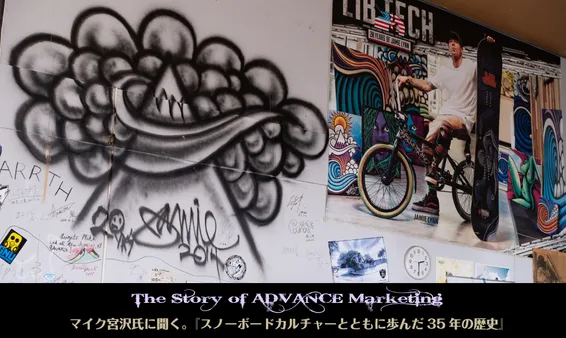
In the snowboarding world, a handful of pioneers and legends have left an indelible mark on the sport, pushing boundaries, inspiring generations, and solidifying snowboarding's place in the pantheon of extreme sports. Their stories of innovation, determination, and passion are woven into the fabric of snowboarding's rich history.
Jake Burton Carpenter: The Godfather of Snowboarding
Often regarded as the father of snowboarding, Jake Burton Carpenter's contributions to the sport are immense. In the 1970s, he revolutionized snowboarding by introducing the first snowboard with metal edges, transforming it from a novelty to a legitimate sport. His pioneering spirit and unwavering dedication to snowboarding earned him the title "Godfather of Snowboarding." Snowboarding Competitions and Events
Other notable snowboarding pioneers include Tom Sims, Dimitrije Milovich, and Chuck Barfoot, who played crucial roles in developing the sport's equipment, techniques, and culture. These snowboarding legends paved the way for future generations of riders to push the limits of the sport and elevate it to new heights.
Shaun White: The Flying Tomato
Shaun White's impact on snowboarding is nothing short of legendary. Nicknamed the "Flying Tomato" for his red hair and aerial prowess, White is one of the most decorated snowboarders of all time. With three Olympic gold medals, 13 X Games gold medals, and numerous other accolades, he has redefined what's possible on a snowboard. White's electrifying performances and signature moves have captivated audiences worldwide, inspiring a new generation of riders.
- Shaun White's Olympic Medals: A Legacy of Gold
- X Games Dominance: Shaun White's Reign at the Top
- Signature Moves: Unlocking Shaun White's Technical Mastery
From the slopes of Nagano to the streets of Aspen, snowboarding legends like Jake Burton Carpenter and Shaun White have left an indelible mark on the sport. Their stories of innovation, passion, and determination continue to inspire aspiring snowboarders and shape the future of this exhilarating sport. Their contributions to snowboarding's progression, both on and off the mountain, have solidified their status as snowboarding's pioneers and icons.
IV. The Future of Snowboarding: Innovation, Inclusivity, and Sustainability
The Future of Snowboarding: Innovation, Inclusivity, and Sustainability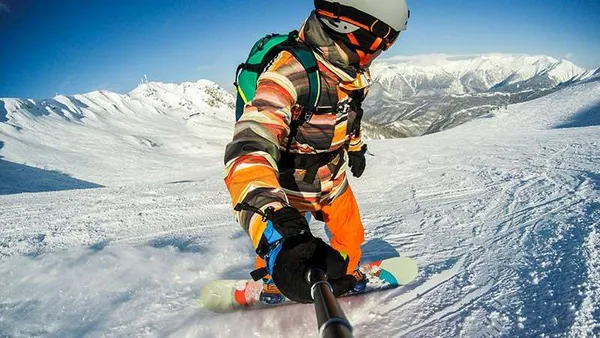
With its exhilarating rides and stunning landscapes, snowboarding's future looks bright. Innovations in equipment and riding techniques, along with a growing emphasis on inclusivity and sustainability, are shaping the sport in exciting ways. This section delves into the key trends transforming snowboarding, carving a path toward a brighter and more accessible future.
- Greener Gear: Snowboarding equipment is undergoing a sustainable transformation. Brands are using recycled materials, reducing waste, and experimenting with eco-friendly manufacturing processes.
- Tech-Driven Enhancements: Advanced technologies like AI and IoT are entering the snowboarding scene. Smart boards, wearable devices, and data-tracking apps are enhancing performance and safety.
- Adaptive Innovations: Adaptive snowboarding equipment and programs are making the sport more inclusive for riders with disabilities, opening up new possibilities for participation and enjoyment.
Snowboarding's future is also characterized by a wave of inclusivity and diversity.
Description | Example |
|---|---|
Adaptive Equipment for Diverse Needs: | Handcycles, sit-skis, and mono-skis are enabling individuals with disabilities to experience the joys of snowboarding. |
Inclusive Events: | Competitions and events are increasingly designed to accommodate riders of all abilities, fostering a sense of community and sportsmanship. |
Diverse Representation: | Brands and media platforms are showcasing and celebrating riders from diverse backgrounds, promoting a more inclusive snowboarding culture. |
Sustainability is another driving force shaping snowboarding's future. Resorts and riders are taking steps to reduce their environmental impact, ensuring that future generations can enjoy the sport in pristine conditions.
From innovative gear to inclusive initiatives and sustainable practices, the future of snowboarding looks promising. This dynamic sport continues to capture the imagination of thrill-seekers and adventurers worldwide, uniting people from all walks of life in a shared passion for the mountains and the freedom of the ride.
Here are some related articles that you might find interesting:
- The History and Culture of Snowboarding
- The Top Snowboarding Competitions and Events
- The Most Famous Snowboarders and Legends of All Time
V. Conclusion
As snowboarding continues its captivating journey, it stands as a testament to the power of human ingenuity, creativity, and the relentless pursuit of adventure. From its humble beginnings to its current status as a global phenomenon, snowboarding has left an indelible mark on popular culture, inspiring countless individuals to embrace the thrill of gliding down snowy slopes with grace and style. As the sport continues to evolve, one thing remains certain: snowboarding's unique blend of adrenaline, artistry, and cultural expression will continue to captivate audiences worldwide for generations to come.